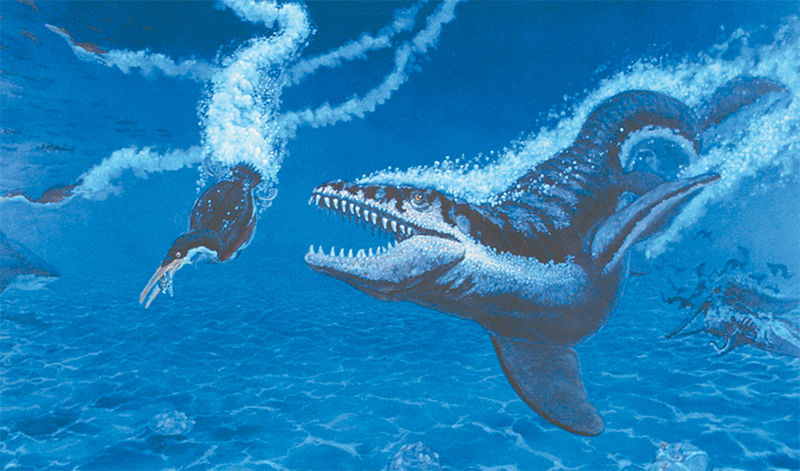Late Cretaceous (~75 MYA) - western Minnesota scene

The mural on the room’s far wall shows a scene that might have come from the western half of Minnesota around seventy-five million years ago. At the time, in the aftermath of the breakup of the supercontinent Pangea, the world’s plates moved nearly twice as fast as they currently do. Consequently, ocean ridges, the Earth’s longest mountain chains, were hotter and higher, displacing so much water up onto the continents that a deep seaway extended from the Caribbean up through the western half of North America (see map).
A rich marine ecosystem thrived within this seaway. The mural shows a mosasaur, Plioplatecarpus, trying to catch a diving bird, Hesperornis. Its intended victim has just caught a fish, Enchodus, while two other Hesperornis in the distance dive after other fish. A large shark Carcharias approaches from the left, while a swarm of smaller Squalus sharks scavenge the carcass of a decaying Plioplatecarpus on the right. On the seafloor lie the shells of a clam, Inoceramus, and a coiled ammonite. Although this scene is based on fossils recovered from a North Dakota site, all these forms lived in western Minnesota as marine organisms pay little attention to state or national boundaries - especially seventy-five million years before nations existed.
The painting is by David Miller and was originally displayed in the North Dakota State Heritage Center in Bismarck, North Dakota. When decommissioned, Hayley Orlowski arranged for the mural’s transfer here.
